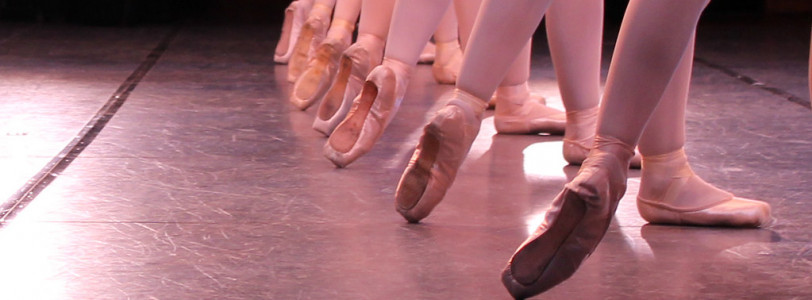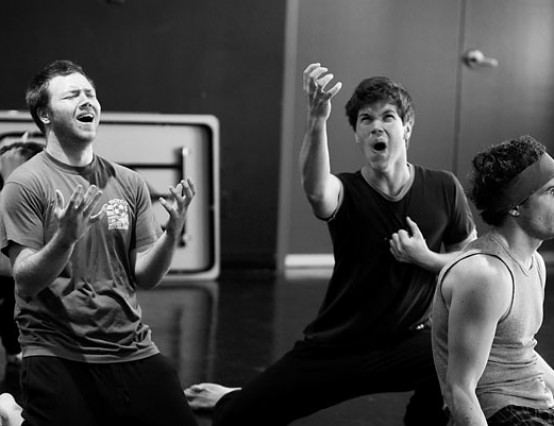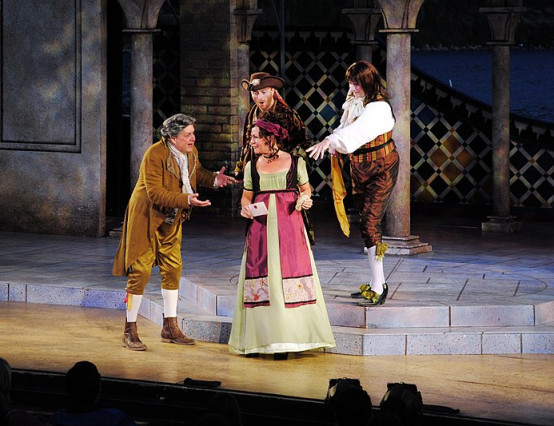As many young ballet dancers will know, getting onto pointe work carries much excitement and anticipation. We are drawn in by the elegance and sophistication of dancing en pointe and begin to dream of the day when we reach that stage in our training.
Recently, I have just progressed onto this very stage, at 15 years old. After taking demi-pointe classes alongside regular ballet, my dance school organised an assessment to advance onto pointe – which I have passed! I’m so excited and can’t wait to get my first pair of shoes!
In this article, I wanted to explore the origins of pointe and pointe shoes, the effect pointe work has on dancer’s bodies and why this ballet technique is loved so much across the globe.
What’s the point(e)?
Put simply, pointe technique is when a ballet dancer will use specifically-designed shoes to dance in, whilst putting their entire body weight onto the tips of their toes. The skill is usually practiced by females but more and more men are beginning to go en pointe.
It’s no secret that pointe is difficult. It takes great strength, balance, and a lot of pain must be endured, but the result is a style of dance that is just the epitome of beauty and grace.
Where it all started
Ballet originated in the 15th century Italian renaissance era as a social dance in events for the nobility and as a behavioural etiquette in courts. After centuries since the dance form began, pointe was first brought to the table in the 1800’s during the Romantic era of ballet. Dancer Marie Taglioni is one of the first recognised pointe dancers and is hugely credited for the birth of pointe. The talk of Paris in the 1830’s, she enthralled audiences with her ethereal grace en pointe. In her performances in the opera Robert le Diable and later La Sylphide, she was a sensation. Her pointe work in these ballets gave her a spiritual appearance and apparent weightlessness as she ascended on to her toes, without even the support of blocked pointe shoes. Her work was unprecedented and paved the way for ballet as we know it today.
The pointe shoe
At first, in the 19th century, “toe-dancing” as it was called then, involved stiffening the toe of your ballet shoe with glue and darning cotton. It was later that same century when “Italian shoemakers developed reinforced pointe shoes with stiff boxes made from newspaper, flour paste and pasteboard.” Since then, innovators such as Anna Pavlova (in the 20th century) have pioneered much change for the shoes - introducing leather soles to harden the box of the shoe and bringing this design to shoemaker Capezio. Nowadays, pointe shoes usually use layers of fabric and glue to form a hard block at the toes, have a leather sole for support and are covered in satin. Many dancers wear silicone/gel toe pads for protection inside the shoe.
What does pointe do to your body?
Ballet is an extremely demanding branch of the arts. Any dancer will tell you how much effort and technique goes into even the smallest of movements in ballet. Being a professional ballet dancer is incredibly strenuous on a person’s body, and in comparison to other athletes, a ballet dancer must look graceful and execute their movements perfectly all the while they practice their discipline.
In pointe, the act of putting all your weight onto the tips of your toes is incredibly taxing on the feet and the rest of the body. Pain from pointe shoes is a bit of a given but the pain can be intensified for a number of different reasons. These include if the person dancing in them is too young, if they don’t fit properly, if they are the wrong brand of shoe for your foot type or if your toes and skin haven’t callused up enough yet, says an article by The Classical Girl.
Some risks from pointe include blisters, ingrown toenails and sprained ankles. Even long term effects can occur – though usually suffered only by professional dancers – such as sesamoiditis, a chronic inflammation of the bones of the ball of the foot.
Due to the high pressure and competitiveness associated with the dancing career, lots of dancers will feel unwilling to come forward about injuries in fear that they will have to take time off. This will often cause greater damage in the long run.
Despite the numerous health risks, pointe has still made it as one of the most integral parts of modern ballet. The artistic and aesthetic advantages of pointe seemingly far outweigh the negative impacts they can have on a dancer’s body.
As for me, I’m booked in for a pointe shoe fitting in June and can’t wait to start dancing in them! The World of Pointe awaits…
For further reading/watching:
https://www.youtube.com/watch?v=OEekFTj5PvU
https://www.faber.co.uk/9780571207244-the-faber-pocket-guide-to-ballet.html









0 Comments